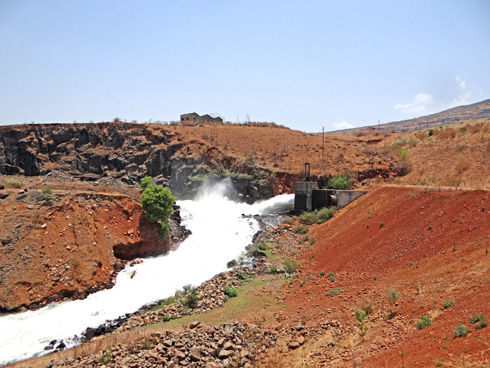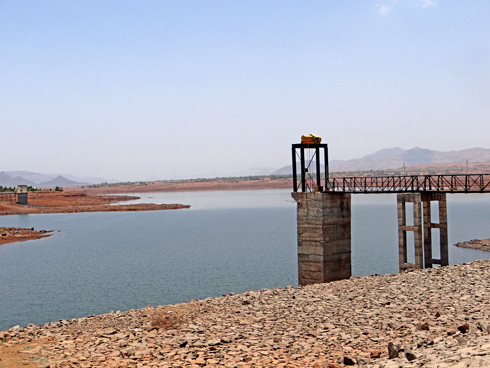In late December 2012, two events took place that are likely to be very significant for the water sector. On 28 Dec 2012, the National Water Resources Council – chaired by the Prime Minister and with all state chief ministers and a number of central ministers as members – adopted the new water policy for the country. The earlier policy, approved in 2002, was being revised after ten years.
Just a day before this, on 27 December 2012, the National Development Council had approved the 12th Five Year Plan for the years 2012-2017. Water resource planning is a critical component of the Plan.
While either of these would be important developments at any time, they assume greater significance as the 12th Plan is attempting to break new ground in water resource planning. As the 12th Plan document’s chapter on water states, the current challenges of the water sector “can only be met through a paradigm shift in the management of water resources in India.” The Plan document presents such a paradigm shift with ten key elements.
Not only the contents, but also the process of the Plan and Policy reflect some of these intentions. There was an attempt to seek wide-ranging inputs for developing the water sector component of the 12th Plan, with some 10 working groups constituted to give inputs related to themes ranging from major projects, groundwater, urban and industrial water supply to water data and water governance. Interestingly, each and every one of these working groups was chaired by an eminent and knowledgeable person from outside the government.
In spite of these, the Policy and the Plan have many important lacunae. At the same time, there are many elements that signal the intention of trying to achieve substantial change.
However, given the entrenched attitudes and vested interests in the system, any progressive change will be an uphill task, particularly if the task is left only to official agencies like the Planning Commission. Any useful change in the face of enormous challenges and opposition can only take place with continuous involvement of communities, particularly hitherto deprived communities, experts and others in the process.
New Report Highlights Critical Issues
It is because of this that a recent report (early 2013) by the UNICEF and FAO (“Report” henceforth) has come as a timely intervention. The Report, titled “Water in India: Situation and Prospects” has been brought out in partnership with SaciWaters (South Asia Consortium for Interdisciplinary Water Resources Studies) and UN agencies working in India and involved in water issues. The report tries to bring together many of the important and critical issues in the water sector in a comprehensive manner, and it has been “timed to contribute to the implementation of the Government of India's Twelfth Five Year Plan.”
The utility of the Report stems from two things. One, the Report has emerged from a process of extensive consultation and drawing of inputs from a wide range of people working in the water sector. Five consultations were held in five different parts of the country with participation from government representatives, experts, civil society members and grassroots NGOs.
Second, the Report not only brings out important suggestions which support many of the initiatives that the 12th Plan wants to take up, but also highlights issues which the Plan does not seem to focus so much on. (Albeit, it does not categorise the issues as those dealt by the Plan and those less emphasised in the Plan).
The Report has nine chapters, one each dealing with the topics of water availability, water demand for various sectors, urban water and sanitation, water pollution, gender and water, governance and management, case studies of positive interventions, likely drivers of change and how to move towards the goal of water for all.
Water Pollution
One of the most significant contributions of the Report is in highlighting the issue of water pollution. Water pollution is possibly the element of water sector that is most neglected, least addressed and one which has the highest impact. By rendering vast quantities of water unfit and highly risky for use, pollution is probably the biggest “user” of water.
The Report brings out the shocking fact that “almost 70 per cent of surface water and an increasing percentage of groundwater [is] contaminated by biological as well as chemical, organic, inorganic and toxic pollutants”. The sources of pollution include industrial, domestic as well as agricultural sources.

Open waste water and sewers often run along the same paths as drinking water pipes and taps in rural and semi-urban areas, raising the risk of water contamination.
Picture: McKay Savage (via Wikimedia)
The Report documents that about 638 million people in India still defecate in the open, and over one third of rural ground water sources in India may be microbiologically contaminated. Much of this contamination is preventable, though, with proper operation and maintenance of water sources coupled with safe sanitation practices. Run-off and leaching from solid waste dumps and dumping of hazardous and toxic wastes into streams are also serious issues.
Further, out of about 38,000 million litres of sewage generated every day, treatment capacity exists for only about 12,000 million litres per day and many plants do not conform to the prescribed standards. The Report also notes that while industry “accounts for only 2 per cent of the annual water withdrawals in India, its contribution to water pollution, particularly in urban areas, is considerable.”
The Report notes that the reason for the persistence of pollution is not the absence of required laws and regulations, but rather non-compliance and the absence of adequate monitoring. It also highlights the serious health impacts of pollution, including the fact that “water and sanitation related diseases are responsible for 60 per cent of the environmental health burden in India.”
Water and Gender
Another important contribution of the Report is in bringing out the importance of the issue of water and gender.
The Report notes that there is much talk of “mainstreaming gender” and no shortage of rhetorical support for gender inclusion in official policies, programs and projects. However, it points out the very critical fact that unless there is gender disaggregated data available on various aspects of water resources, there is no way related concerns can be effectively integrated. Such gender disaggregated data is hardly available and hence the Report argues for such data to be collected, and the performance, especially with respect to equity in benefit sharing of domestic and irrigation projects, to be assessed with the help of such data.

Girls carrying water in India. One of the key recommendations of the UNICEF report relates to gender disaggregated data on various aspects of water resources.
Picture: Korrigan (via Wikimedia)
It also highlights the fact that women are grossly under-represented in the water bureaucracy and professional organisations, quoting a study that “discovered that in the irrigation sector in Maharashtra only 7.53 per cent employees were women, of which a mere 1.93 per cent were employed as technical staff.” To address this, the Report forcefully argues that “there is a need for a positively discriminatory gender policy in the water sector that not only relates to hiring more women staff but also retaining them through affirmative action such as providing gender-specific facilities.” This is certainly one recommendation that the establishment must take serious note of.
The Way Forward
Two chapters towards the end identify the pressures and drivers of changes, the role that various stakeholders can play, and present recommendations for addressing key sectoral gaps. This section highlights the importance of making water a fundamental human right, and also raises critical questions about some of the “panacea” like Public Private Partnerships and Independent Regulatory Authorities being promoted by international financial institutions like the World Bank.
One of the most interesting recommendations in this section is the need for “imparting a new vision of water for technocrats through targeted capacity building programme” as the complexities of managing water need integration and interdisciplinary approach, and working with communities. The need of the hour is to educate water professionals, and especially the engineers working in departments dealing with domestic water supply and irrigation, with integration skills. Moreover, the Report says that “there is a pressing need to expose the water bureaucracy to social processes”, and equally important, to expose “people to the technical processes, of water management. Both need to see 'the other side' and find a practical way to work together.”
Supporting the Paradigm Shift
The UNICEF report is interesting because it represents an important intervention from outside to push the establishment towards positive change. On one hand, it supports, with evidence and insights, many of the changes being proposed in the new Policy and the Plan. At the same time, it highlights critical elements that the Plan and Policy have missed or have not emphasised enough. Lastly, it also offers critical comments, sometimes even scepticism regarding some of the “reform” measures that have been pushed in the last decade by international financial institutions. In this manner, the Report provides support for pushing the water sector in a more desirable direction.
It is only many such interventions, in the form of studies and reports, ground level actions, critical monitoring of the water establishment, and others that will ensure that the water sector really moves in the direction of a new paradigm of resource use and management.

